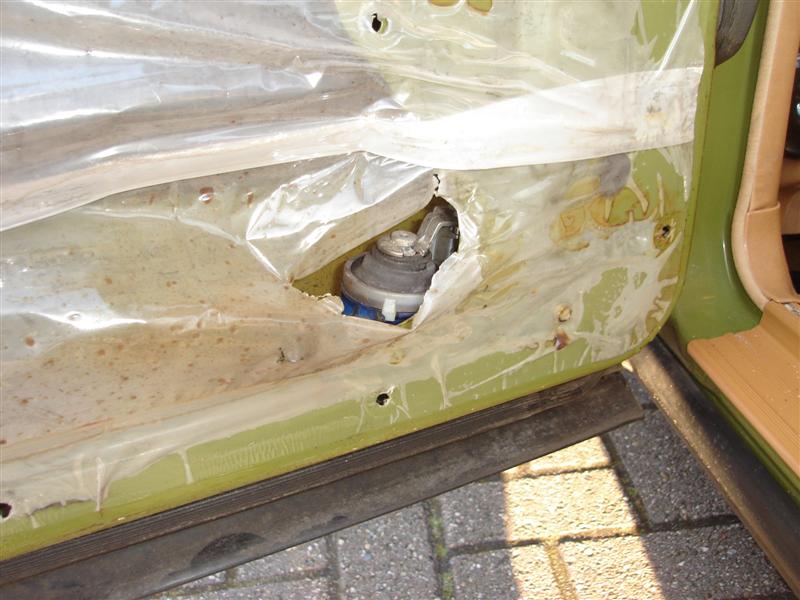Here's a copy/paste of another thread, hope it helps.
If you think you have vacuum problems, harsh shifting, or the motor simply won't shut off, here's where you can start and get your own answers with any basic vacuum tester.
The car featured is a 1983 300D, but the principles described are pertinant to any 1980-1985 W123 diesel.
The blue arrows indicate direction of vaccuum.
The components:
A. Main Vacuum Supply line with integrated check valve (other end connects to vaccum pump)
B. Vacum System Supply
C. Vacum System Venting
D. Pressure line to transmission modulator
E. Pressure line to climate control system
F. Pressure line/check valve for central locking system
G. Pressure line to ignition lock assembly (brown line not visible, note the connector branch red line points to) (for fuel shut-off)
H. Pressure line from ignition signal to fuel shut-off valve mounted on injection pump
I. Venting system control valve
J. Surge dampener
K. Vacuum Brake Booster
Procedure:
NOTE: WHEN TESTING VACUUM ELEMENTS I DON'T LIKE TO EXCEED ABOUT 10-12 PSI- THAT'S ALL YOU NEED TO GET YOUR ANSWER WITHOUT UNECESSARY RISK OF BLOWOUT BY OVER-PRESSURIZING IT.
1. Test vacuum pump operation/effectiviness.
With motor running, attach your tester to the grey line (B) in direction of suction as indicated. If your car has more than one port off the main booster line (A) it may be necessary to isolate them off to get an effective reading. It should read 15-20 psi, and reading will fluctuate a few psi. When one or more check valves inside the vacuum pump fails (or something), the typical reading will be only about 5-6 psi or so, if any. Reconnect and turn off motor. (Key in off position)
2. Isolate the central locking system.
Unplug yellow check valve. (F) Use a suitible means to plug the open port as indicated. This simply isolates the enitre central locking system testing/temporary reasons.
3. Test climate system supply line.
Attach tester to line E. If it can hold 10 psi for more than one minute, it is does not bear concern and you can reattach it. If it fails this test, you may want to cap these connections (isolation) for further testing.
4. To test complete fuel shut-off signal:
Attach tester to the brown vaccum supply line (G) With motor off, and key in on position, test for pressure by evacuation to 10 psi and ensure it holds for 30 seconds. Turn key to off. If pressure drops, the ignition signal valve works. Then re-evacuate with tester to 10psi again. Success indicates vacuum element for fuel shut-off (not shown, follow line direction indicated by number 5) is good. Depressurize tester. Turn motor on with key. Then turn key to off. Motor should continue to run. Evacuate with tester and motor should turn off. A few pumps only is good response, if many rapid pumps are required, the system could be better. Check for oil passing the fuel shut-off valve, into the ignition signal switch, which can trash the rubber connectors.
5. Note: the fuel-shut off element can be tested directly at it's port (connected to by line indicated)
6. Check vacuum modulator (and supply line connection) of transmission for integrety. Test line D, look for 10 psi to hold over a minute. This element can also be tested directly at it's supply port.
7. Test basic venting valve operation:
With motor off, apply tester to hose as indicated. Apply 10 psi to check for pressure. It should slowly vent the pressure off. Test again, and pull throttle linkage all the way, and it should vent off the pressure very quickly.







